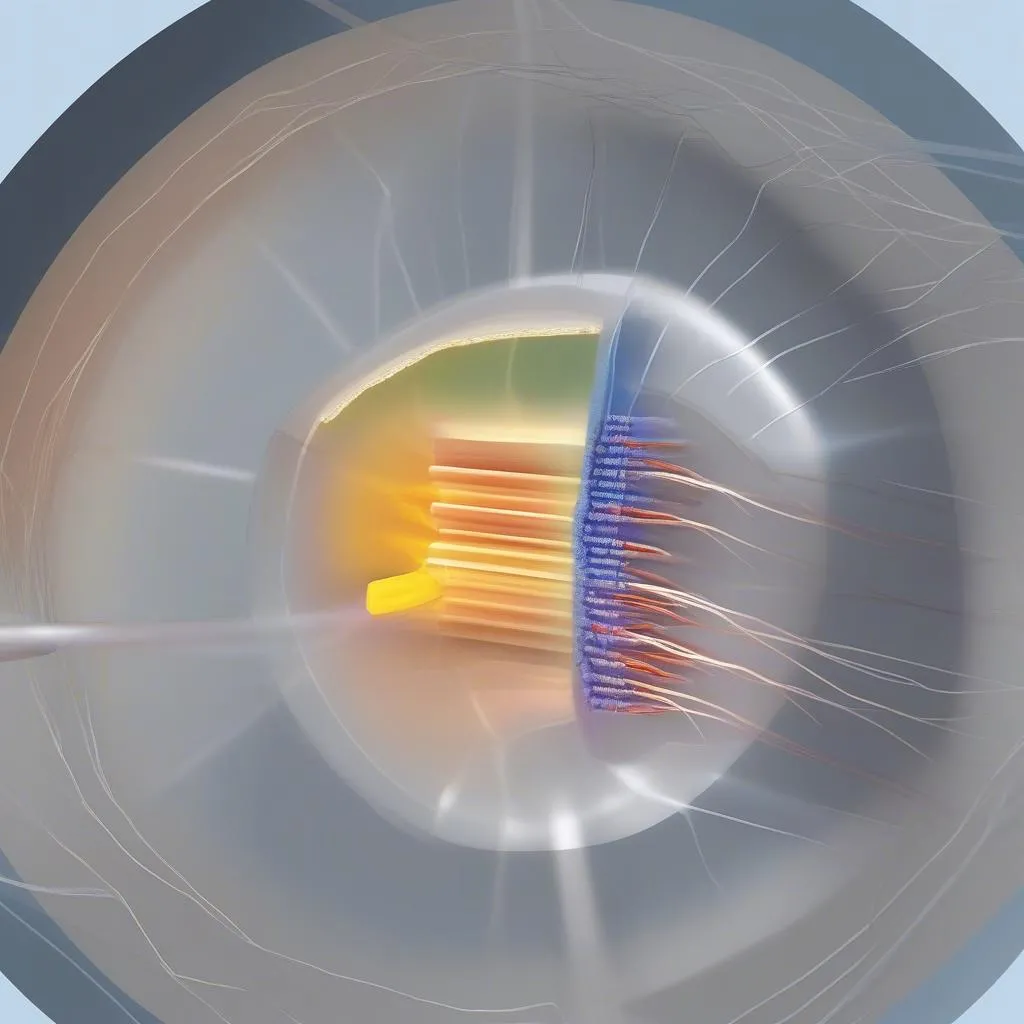Have you ever wondered why a straw in a glass of water appears bent? Or why a diamond sparkles with such brilliance? The answer lies in a fascinating phenomenon known as the refraction of light. As a light ray travels from one medium to another, like from air to water, it changes direction, creating these intriguing visual effects. Today, we’ll delve into the science behind this phenomenon, explore its real-world applications, and discover how it shapes our perception of the world around us.
Refraction: The Bending of Light
Imagine yourself strolling along the picturesque Charles River Esplanade in Boston. As you gaze at the ducks gliding through the water, you might notice that their legs appear to bend at the point where they enter the water. This illusion occurs because light travels at different speeds through different mediums.
When a light ray travels from a less dense medium like air to a denser medium like water, it slows down. This change in speed causes the light ray to bend towards the normal, an imaginary line perpendicular to the surface at the point of incidence. Conversely, when light travels from a denser medium to a less dense medium, it speeds up and bends away from the normal.
The Role of Refractive Index
The degree to which light bends as it passes from one medium to another is determined by the refractive index of each medium. The refractive index is a measure of how fast light travels through a material. The higher the refractive index, the slower light travels through that medium, and the more it bends.
For example, water has a higher refractive index than air. This explains why light bends more as it enters water from air, creating the illusion of the bent straw or duck legs.
 Light refraction in water
Light refraction in water
Applications of Refraction
The principle of refraction has far-reaching applications in our everyday lives and various technological advancements.
Lenses and Vision Correction
Eyeglasses and contact lenses utilize refraction to correct vision problems. These lenses are designed with specific curvatures that bend incoming light rays, ensuring they focus properly on the retina at the back of the eye. Whether you’re nearsighted or farsighted, corrective lenses manipulate the refraction of light to compensate for the eye’s inability to focus light correctly.
Photography and Telescopes
Cameras and telescopes rely on lenses that refract light to capture images. Camera lenses focus light onto a sensor, creating a sharp and clear image. Similarly, telescopes use lenses or mirrors to collect and focus light from distant objects, allowing us to observe celestial bodies in greater detail.
Fiber Optics and Communication
Fiber optic cables transmit information over long distances at incredibly high speeds using light pulses that travel through thin strands of glass or plastic fibers. The principle of total internal reflection, a special case of refraction where light is trapped within a medium, plays a crucial role in guiding light signals through these fibers with minimal loss.
 Fiber optic cable transmitting light
Fiber optic cable transmitting light
Refraction and the Beauty of Nature
Beyond its practical applications, refraction contributes to the awe-inspiring beauty we witness in nature.
Rainbows: Nature’s Prisms
Rainbows, one of nature’s most captivating displays, are formed due to the refraction and reflection of sunlight through raindrops. As sunlight enters a raindrop, it is refracted and separated into its different colors. This separation occurs because each color of light has a slightly different wavelength and bends at a slightly different angle. The light is then reflected off the back of the raindrop and refracted again as it exits, creating the vibrant arc of colors we know as a rainbow.
Sparkling Diamonds and Gems
The brilliance of diamonds and other gemstones is also a result of refraction. When light enters a diamond, it undergoes multiple internal reflections due to the diamond’s high refractive index and precisely cut facets. These reflections and refractions disperse light, creating the dazzling sparkle that diamonds are renowned for.
Planning Your Next Adventure?
If you’re fascinated by the wonders of light and its interplay with the world around us, consider visiting a science museum like the Exploratorium in San Francisco or the Museum of Science and Industry in Chicago. These museums offer interactive exhibits that demonstrate the principles of light, including refraction, in engaging and accessible ways.
FAQs About Refraction
Q: What causes light to refract?
A: Light refracts when it travels from one medium to another with a different refractive index. This change in speed causes the light to bend.
Q: What is the relationship between the angle of incidence and the angle of refraction?
A: The angle of incidence is the angle between the incident ray and the normal, while the angle of refraction is the angle between the refracted ray and the normal. These angles are related by Snell’s Law, which states that the ratio of the sine of the angle of incidence to the sine of the angle of refraction is equal to the ratio of the refractive indices of the two media.
Q: Can sound waves be refracted?
A: Yes, sound waves can also be refracted. Similar to light, sound travels at different speeds through different mediums. When sound waves encounter a change in medium, they bend, leading to phenomena like sound traveling further in certain weather conditions.
Conclusion
Refraction is a fundamental phenomenon that shapes our understanding of light and its interactions with matter. From the simple act of seeing to advanced technological applications, refraction plays a vital role in our lives. As you go about your day, take a moment to appreciate the subtle ways in which refraction influences your perception of the world. Whether you’re admiring a rainbow, marveling at the sparkle of a diamond, or simply enjoying a glass of water, remember that the beauty and wonder of light are often revealed through the bending of its path.

